Phacoemulsification
Phacoemulsification is a type of cataract surgery that uses ultrasound waves to break up and remove the cloudy lens of your eye.
Overview Phacoemulsification
The most frequent cataract eye surgery is phacoemulsification. Cataract surgery is used to restore eyesight in individuals who have cataracts, a cloudiness of the lens.
The iris is the curved part of your eye that regulates how much light you let in. The lens, which is located behind the iris, focuses light on the retina and creates clear, sharp photos. The lens has the ability to adapt its shape, known as accommodation. However, as eyes age, the lens hardens and loses its capacity to change shape. This can make it difficult to focus on close-up objects, a condition known as presbyopia.
Cataracts are a common cause of vision problems in older adults. By age 80, more than half of the people have cataracts or have had cataract surgery.
Book Free Consultation
Book Appointment or Video Consultation online with top eye doctors
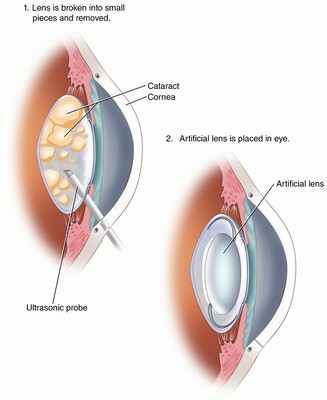
Phacoemulsification Procedure
During phacoemulsification, a surgeon makes a small incision near the corneal edge and then penetrates the membrane surrounding the lens with an ultrasonic probe. The cloudy lens is destroyed with a tiny ultrasonic instrument that vibrates at ultrasonic speed to chop and almost dissolve the lens material into miniscule fragments. The pieces are then suctioned from the eye.
After the lens has been removed, an intraocular lens (IOL) is placed in the same location as the natural lens. It is inserted through a tiny corneal incision using a hollowed-out tube. The lens unfolds and is positioned in place after it has been pushed through.
Typically, phacoemulsification is an outpatient procedure that does not require a hospital stay. The cataract surgery operation is carried out under local or topical anesthesia (eye drops numbing the eye).
Benefits of Phacoemulsification
- The most crucial advantage, of course, is vision rehabilitation. Because the IOL implanted in the eye compensates for previous refractive error, patients may now use special lenses that can correct for distance alone (monofocal lenses), near and distance both (multifopalts) and even astigmatism (toric lenses).
- Small incisions that heal without the use of stitches or sutures.
- Improved sight allows you to feel more confident, mobile, and independent.
- Another psychological benefit is the immense feeling of freedom from blindness. The majority of patients report having a sensation of vibrant and clear sight, knowing that their concerns were pointless.
- Because the surgical downtime is so short, most patients are able to resume their regular activities, such as TV viewing, reading, and resuming official responsibilities, within two to three days after surgery.
Why is it preferred over Conventional Cataract Surgery?

- The standard extracapsular cataract surgery incision is about 11mm wide and requires numerous stitches for closure. A suture removals may be required at a later date.
- The circular aperture of the anterior lens capsule, as opposed to the irregular one in traditional cataract surgery, provides for greater IOL stability.
- Phacoemulsification is a less invasive approach that can help you avoid surgery if done in the early stages of cataract development. It typically results in a decreased incidence of surgically induced corneal astigmatism, allowing for reduced reliance on glasses following the operation.
- The incidence of potentially severe sight-threatening complications such as vitreous loss, cystoid macular edema, wound leak, retinal detachment, and endophthalmitis is lower, making this cataract surgery procedure safer and more successful.
Surgery Risks
Cataract surgery is generally a very safe and successful procedure. However, as with any type of surgery, there are certain risks and complications that can occur. These include:







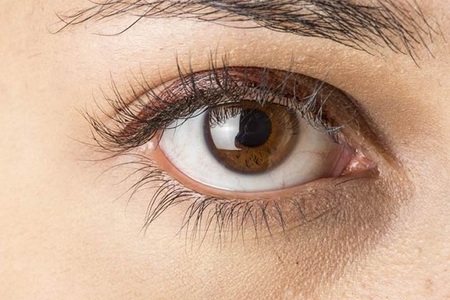
Phacoemulsification Surgery Aftercare
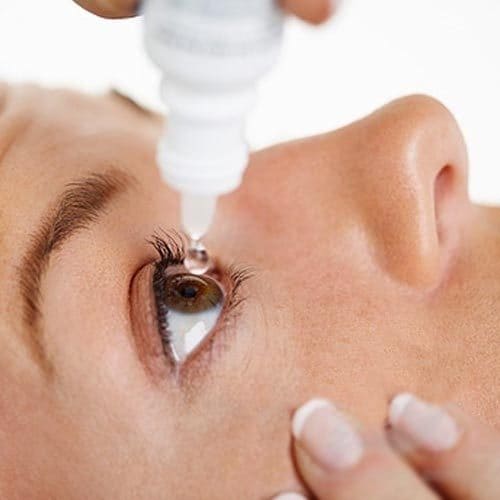
After phacoemulsification cataract surgery, it is important to follow your eye surgeon’s instructions for care. This will help ensure a successful outcome and avoid complications.
Generally, you can expect your vision to be blurry immediately after surgery. It is also common to experience some discomfort, such as burning, itching, or stinging. Your eye may also water more than usual.
These symptoms should improve within a few days as your eye heals. However, it can take several weeks for your vision to fully recover. During this time, you will need to avoid activities that could put strain on your eye, such as lifting heavy objects or participating in contact sports.
You will also need to use eye drops as directed and attend follow-up appointments with your surgeon. These steps will help ensure that your eye heals properly and that you regain clear vision.
Phacoemulsification Surgery Cost
The cost of phacoemulsification surgery can vary depending on a number of factors, such as the surgeon’s experience, the type of procedure being performed, and the location of the surgery. In general, however, phacoemulsification surgery tends to be less expensive than traditional open-eye surgery.
| Lenses | Techniques | Prices | Benefits | |
|---|---|---|---|---|
| Monofocal (Distance Vision) | PHACO | 10,000 – 20,000 | ||
| MICS | 30,000 – 50,000 | 1.2mm incision | ||
| Multifocal (Distance & Near Vision) | MICS | 30,000 – 50,000 | Anti PCO ring, Blue light filter | |
| Trifocal (Near, Far & Computer Vision) | MICS | 45,000 – 80,000 | HD Vision, Anti-Glare, Anti PCO ring, Blue light filter | |
| Toric (Distance & Cylinderical Power) | MICS | 30,000 – 50,000 | Anti-Glare, Anti PCO ring, Blue light filter | |
| For Zepto Robotic Cataract Surgery, additional charges for Rs. 20,000 – 30,000 | ||||
| For Femto LASIK Robotic Cataract Surgery, additional charges for Rs. 70,000 – 90,000 | ||||
Our Facilities


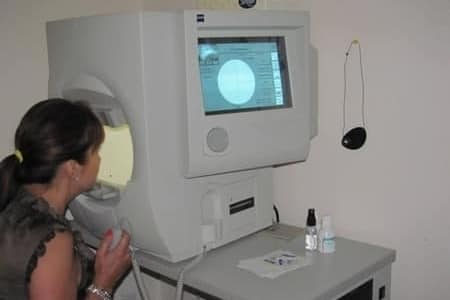

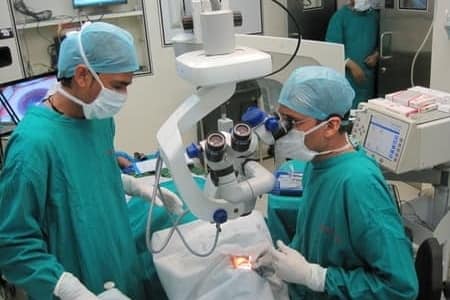

Top Cataract Surgeons in Delhi
Eye Mantra provides the greatest ophthalmologists and cutting-edge equipment for your LASIK surgery.

Cataract, Retina, Glaucoma, LASIK

Cataract, Retina, Glaucoma, LASIK

Retina Specialist

Cataract, Retina, Glaucoma, LASIK
Frequently Asked Question's.
Phacoemulsification cataract surgery is a type of cataract surgery that uses ultrasonic waves to break up and remove the cloudy lens of the eye. This type of surgery is less invasive than traditional cataract surgery, and has a shorter recovery time.
The cost of phacoemulsification cataract surgery can vary depending on a number of factors, including the type of insurance you have, the surgeon you choose, the region where you live, and whether or not you need any additional treatments. In general, however, the average cost of phacoemulsification cataract surgery is around Rs.10,000 – Rs.20,000. This cost typically includes the surgeon’s fee, the cost of the anesthesia, and the cost of the facility where the surgery is performed. It is important to keep in mind that this is just an average cost, and your specific costs may be higher or lower depending on your individual situation.
Phacoemulsification cataract surgery has a number of benefits over traditional cataract surgery. First, it is less invasive, which means that there is less risk of complications. Second, it has a shorter recovery time, so you can get back to your normal activities more quickly. Third, phacoemulsification cataract surgery is typically performed on an outpatient basis, so you don’t have to stay in the hospital overnight. Finally, this type of surgery is often covered by insurance, so you may not have to pay out of pocket for the procedure.
As with any surgery, there are some risks associated with phacoemulsification cataract surgery. These risks include infection, bleeding, and swelling. However, these risks are typically very low, and most people experience no complications.
Most people who have cataracts are good candidates for this type of surgery. Your doctor will be able to tell you if you are a good candidate based on the severity of your cataracts and your overall health.
Most people who have this type of surgery can expect to see an improvement in their vision within a few days. You will likely need to wear sunglasses or protective eyewear for the first few days after surgery, and you should avoid strenuous activity for at least a week. Your doctor will give you specific instructions on what you can and cannot do after surgery.


